
" Once upon a time in Singaporean Kingdom lived a king called
Creator who considered himself equal to Gods. His country was widely
known for its warriors which fought successfully in multiple wars
waged by rulers of the Game World. Like the most faithful soldiers
form the Guards, the warriors of Creator formed a bluster army.
It could mean that the blusters would prove to be strong and brave
on any front.
Once the king quarreled with Queen of the South
Game World who used to send her geforces to him so that he brought
them up and trained to be strong warriors. I must say that Creator
loved geforces most of all and spare no time or forces to breed
them. But South Queen deceived the king by promising that ultra-geforces
of the second generation would be the strongest and their troops
would conquer the whole Game World. Creator put much forces into
them while the Queen hid traitorously stronger forces, that is why
all efforts of the king were useless. Since that time Creator decided
that he won't deal with South Queen and would establish a union
with one of the Queen's favorites.
Meanwhile, the positions of South Queen shook
because North Queen started moving on all fronts of the Game World.
Some of the lieges of South Queen moved to her competitor. However,
Creator, being betrayed, couldn't betray, that is why he kept on
bringing up and educating geforces. But that time he did it together
with a chieftain of a large group of warriors named Micro Star.
The latter was in good standing with South Queen that is why he
could get troops of geforces without problems for further upbringing
and education. And he sent a part of them to Creator...
And soon the king got two brothers-blusters...
I must say that blusters rarely got names. You know, barracks, a
spartan life in system units... They got only codenames. Our attention
was attracted by two brothers-geforces who were both of the 4th
generation. But they differ as a pawn and a queen... "
Well, let's play journalists and ask the brothers
about their life...
We will take a look at two video cards from Creative. They have the
same names, but the suffixes mean that their capabilities differ.
But first of all, look at the articles related with the GeForce4 Ti
line.
Theoretical materials and reviews of video cards which concern functional
properties of the NVIDIA GeForce4 Ti GPU
The cards we have today are Creative 3D Blaster 4 Titanium 4400 and Creative
3D Blaster 4 MX 420. The cards are based on one of the fastest GPUs - Ti
4400 and on the weakest one of the GeForce4 line - MX 420.
Cards
Creative 3D Blaster 4 Titanium 4400
The Creative 3D Blaster 4 Titanium 4400 has an AGP x2/x4 interface,
128 MBytes DDR SDRAM located in 8 chips on both sides of the PCB.
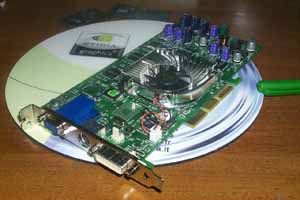
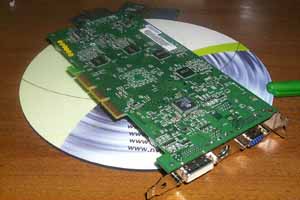
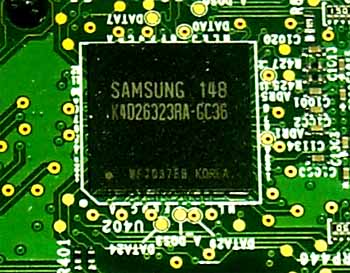
The card is based on the GeForce4 Ti 4400. The Samsung 3.6ns memory
chips correspond to 275 (550) MHz at which the memory works.
The new BGA package and the new design allow the memory work stably
at the rated frequencies even without cooling. The chip operates at 275
MHz.
Creative 3D Blaster 4 Titanium 4400
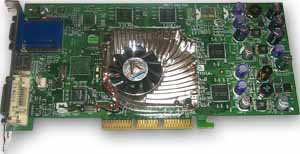
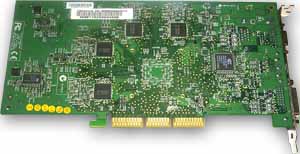
NVIDIA GeForce4 Ti 4400


MSI GF4TI4600
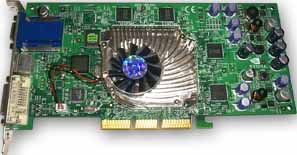
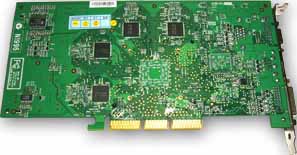
I showed a GeForce4 Ti 4600 card from MSI so that you can see that Creative
actually sells cards produced by MSI. The card corresponds to the reference
design.
Now let's take a look at the cooler which is a soap-box of all card
makers.
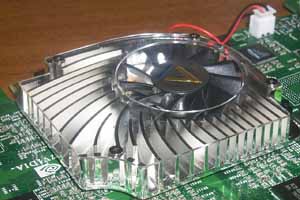
The design of the heatsink is standard for the GeForce4 Ti cards: it is
a box closed at two sides whereto a fan drives air which as a heavy flow
passes over the GPU.
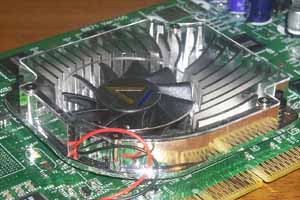
The only drawback is a plastic cover of the heatsink. Although it doesn't
impede and even shows internal passages of the silvery cooler, it makes
quite much noise. By the way, it is reported that there are a lot of returned
cards exactly because of the noisy cooler.
The memory modules do not have heatsinks. On the back side of the card
there is a processor from Conexant meant for TV-out (although the GPU carries
all components necessary for TV-out).
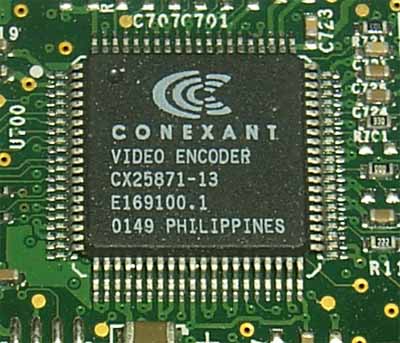
Let's take off the heatsink:
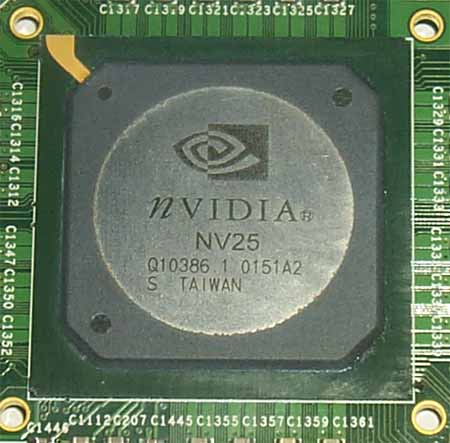
The processor is codenamed (NV25) as it was produced long time ago - at
the 51th week of 2001 (in December). It's interesting that almost all NV25/GeForce4
Ti chips we could see on the tested cards are produced so long ago. It
proves that the GeForce4 was ready yet at the end of 2001 and its release
was put off.
Note that GeForce4 Ti 4600 cards can be incompatible with some mainboards,
in particular, with the EPoX 8KHA+ whose capacitors prevent installation
of such cards.
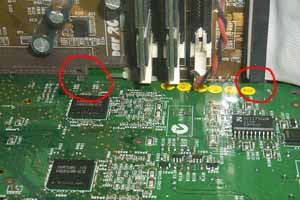
A similar problem occurred with the Chaintech 6OJV2 board on the i815E.
Although one will hardly install such a powerful card into the old board
which supports processors only up to 1 GHz, but still note that IDE connectors
are placed so that the long Ti 4400/4600 card sets against the upper part
of the connector of the IDE cable that is why the card can't be completely
inserted into the AGP slot. If you bend a little the card to let its tail
pass below the IDE connector the problem can be solved, but it can be very
dangerous for the card.
The GeForce4 Ti Creative 3D Blaster 4 Titanium 4400 has three
connectors: VGA, DVI and TV-out (see the details here).

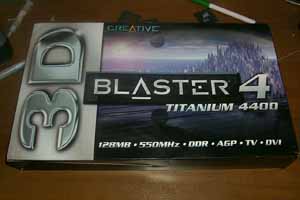
The card ships in the Retail package which includes:
- user manual;
- 2 CD with software:
- drivers and utilities;
- Incoming Forces game;
- S-Video-to-RCA adapter;
Overclocking
The card ships with NVIDIA's drivers (ver.27.50/Win9x/WinXP)
and DEMO programs. That is why you can overclock the card through
the drivers and with a utility of fine adjustment - RivaTuner.
The card operates stably at 305/340 (680) MHz which
is higher than the rated speed of the Ti 4600. The Gainward
PowerPack Ultra/700 had the same results, and you can get the
understanding of how the card runs at these frequencies from the
review on the Gainward cards.
Note:
- in course of overclocking you must provide additional cooling, in particular,
for the card (first of all, for its memory):

- overclocking depends on a definite sample, and you shouldn't generalize
the results of one card to all video cards of this mark or series. The
overclocking results are not the obligatory characteristics of a video
card.
Creative 3D Blaster 4 MX 420
The Creative 3D Blaster 4 MX 420 has an AGP x2/x4 interface,
64 MBytes DDR SDRAM located in 8 chips on both sides of the PCB.
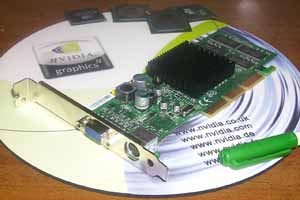
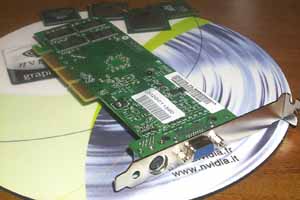
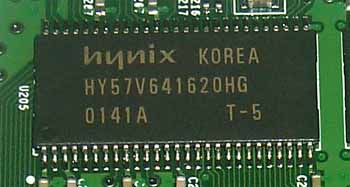
The card is based on the GeForce4 MX 420. The Hynix 5 ns memory chips
correspond to 200 MHz. The memory works at 166 MHz.
All cards of the latest generations are not produced by Creative Labs
itself, the company buys them from MSI and sells under its own trademark.
On the photos above and below you can find the label of MS.
Creative 3D Blaster 4 MX 420
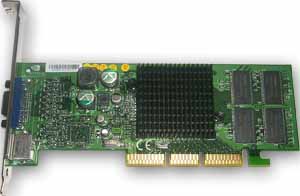
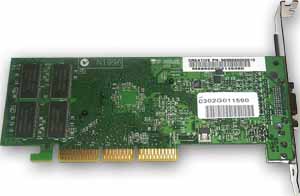
NVIDIA GeForce4 MX 420
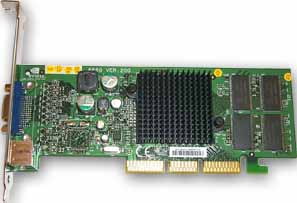
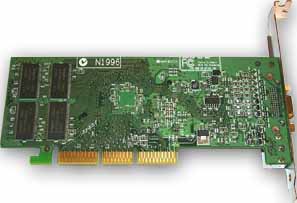
The less expensive cards, such as MX 420, have only a passive heatsink.
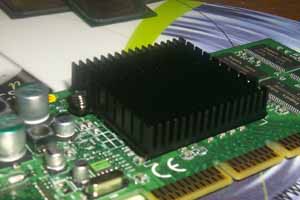
As you can see, the chip is cooled with a pin heatsink which is locked
on the card with clips.
Let's take off the heatsink:
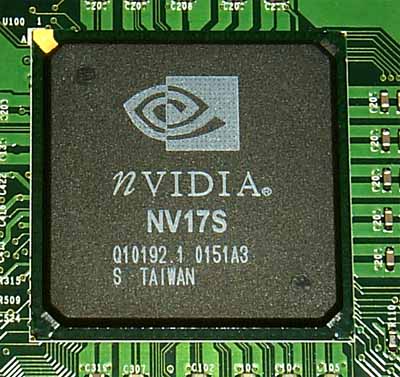
The card has a TV-out (S-Video), and this function is controlled by the
graphics processor, that is why no more decoders are installed. In the
box we found an instruction sheet for the TV-out.
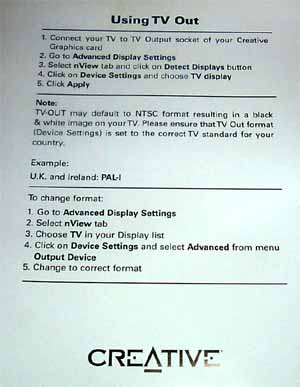
This card is also incompatible with some mainboards, for example, with
the Leadtek P4I845D on the i845D.
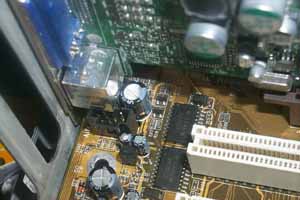
The Tv-out connector and capacitors of the mainboard do not impede each
other and the video card can't be inserted into the AGP slot. The problem
concerns all GeForce4 MX cards on this mainboard.
Besides, all tested MX 420 cards do not work on the ABIT KT7A (VIA KT133A).
The Creative 3D Blaster 4 MX 420 has two connectors: VGA and
TV-out (we already wrote about the TV-out here).
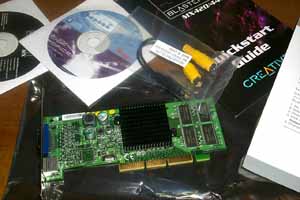
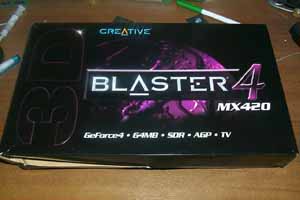
The card ships in the dark retail package which includes:
- user manual;
- 2 CD with software:
- drivers and utilities;
- Incoming Forces game;
- S-Video-to-RCA adapter;
Overclocking
The card ships with NVIDIA's drivers (ver.27.50/Win9x/WinXP)
and DEMO programs. That is why you can overclock the card through
the drivers and with a utility of fine adjustment - RivaTuner.
This sample works stably at 315/230 MHz which is the highest result
for such cards.
Test system and drivers
This time we estimated how performance of the Ti 4400/4600 cards depended
on a CPU frequency (on the Intel's platform), that is why we used several
testbeds:
- Pentium 4 2200 MHz based computer:
- Intel Pentium 4 2200 (L2=512K);
- ASUS P4T-E (i850) mainboard;
- 512 MBytes RDRAM PC800;
- Quantum FB AS HDD, 20 GBytes;
- Windows XP.
- Pentium 4 2000 MHz based computer:
- Intel Pentium 4 2000 (L2=512K);
- ASUS P4T-E (i850) mainboard;
- 512 MBytes RDRAM PC800;
- Quantum FB AS HDD, 20 GBytes;
- Windows XP.
- Pentium III 1000 MHz based computer:
- Intel Pentium III 1000 MHz (133 MHz x 7.5)
- Chaintech 6OJV2 (i815E) mainboard;
- 256 MBytes SDRAM PC133;
- Seagate Barracuda IV HDD, 40 GBytes;
- Windows XP.
The test system was coupled with ViewSonic P810 (21") and
ViewSonic
P817 (21") monitors.
In the tests we used NVIDIA's drivers of v28.32. VSync was off,
S3TC
was off.
For the comparative analyses we used the following cards:
- ABIT Siluro GF3 Ti500 (NVIDIA GeForce3 Ti 500, 240/250 (500) MHz, 64 MBytes);
- ATI RADEON 8500 (RADEON 8500, 275/275 (550) MHz, 64 MBytes, driver 6.052);
- Joytech Apollo Devil Monster II RADEON 8500 (RADEON 8500LE, 250/250 (500)
MHz, 128 MBytes, driver 6.052, o/c to 275/275 (550) MHz).
- Gainward GeForce2 Ti/500 (250/200 (400) MHz, 64 MBytes);
- Leadtek WinFast GeForce2 MX400 (200/183 MHz, 64 MBytes);
- ATI RADEON 7500 (RADEON 7500, 290/230 (460) MHz, 64 MBytes, driver 6.052);
Test results
The 2D quality of the Ti 4400 card is the same as of the reference one,
no problems up to 1600x1200@85 Hz. The dual-monitor support was already
estimated here.
2D quality of the MX 420 card is a little worse. This card is meant
for a resolution of 1280x1024, where up to 100 Hz you won't spoil
your eyes.
For estimation of 3D quality we used:
- Serious Sam: The Second Encounter v.1.05 (Croteam/GodGames) - OpenGL, multitexturing,
Grand Cathedral demo, test settings: quality, S3TC OFF, Trilinear;
- Return to Castle Wolfenstein (MultiPlayer) (id Software/Activision) - OpenGL,
multitexturing, Checkpoint-demo,
test settings - maximum, S3TC OFF, the configurations can be downloaded
from here.
Tests 3D Blaster 4 Titanium 4400
Serious Sam: The Second Encounter
The tests were carried out in a 32-bit color mode.
1024x768
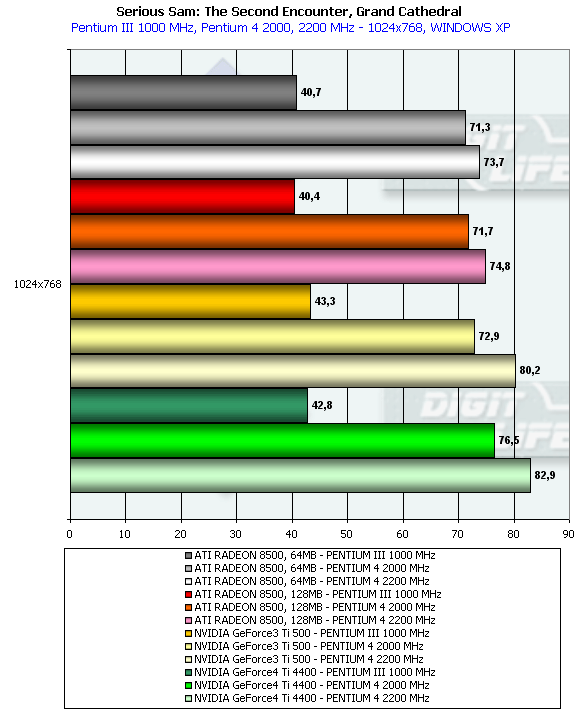
You can see that it makes no sense to buy such an expensive accelerator
for the Pentium III. However, almost all cards are limited by the CPU in
this resolution.
1280x1024
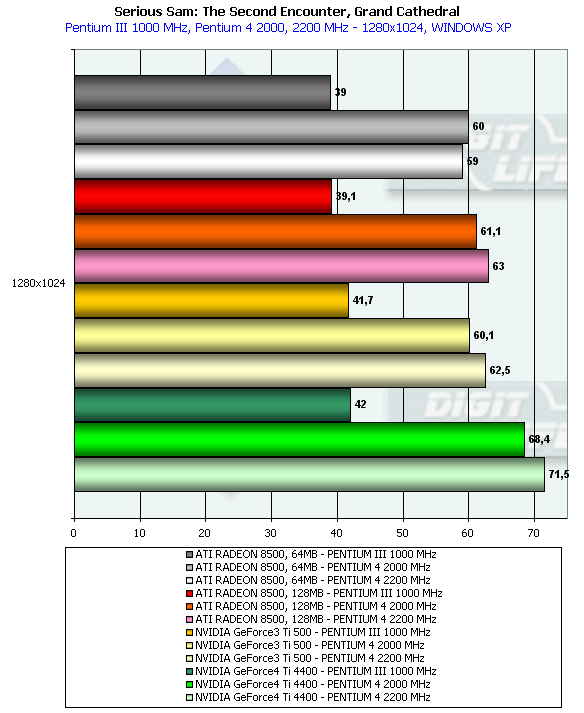
The situation is almost the same. The TI 4400 has a solid advantage.
1600x1200
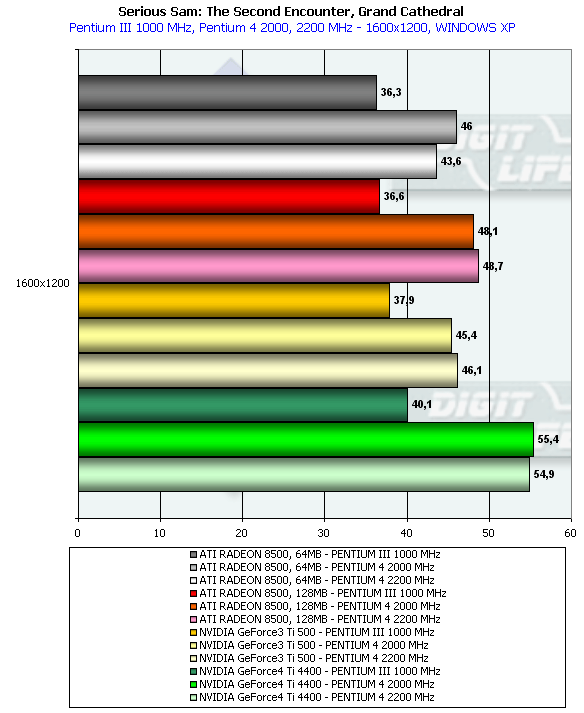
The gap between the Ti 4400 and its competitors is larger, and the Ti 500
yields to the RADEON 8500.
Summary
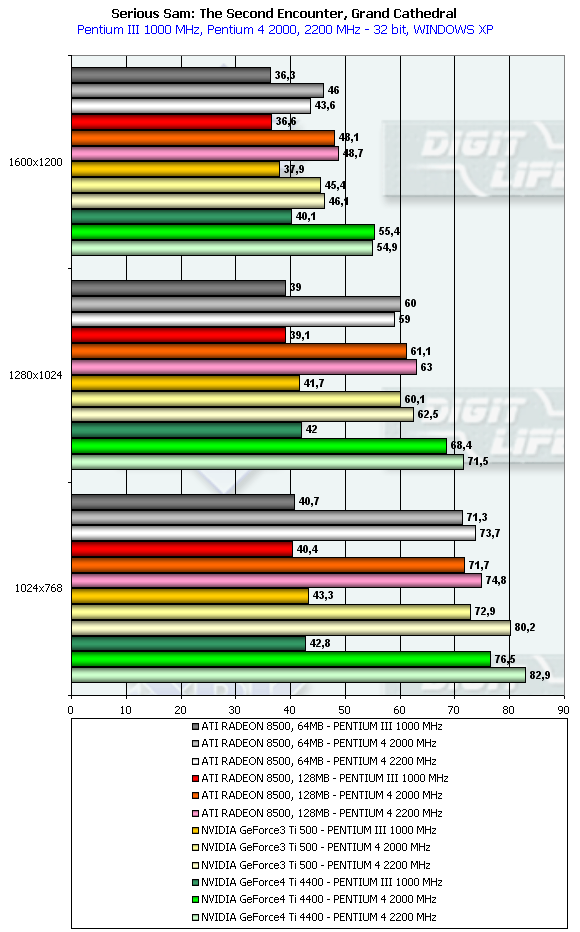
The test shows that theTi 4400 based cards should be coupled with CPUs
at least of 1.5 GHz. Do not use Ti 4400/4600 cards on old platforms:
a system unit must be balanced! If you want a very powerful video card
you should upgrade your processor and/or platform!
Return to Castle Wolfenstein
The tests were carried out in 32-bit color mode.
1024x768
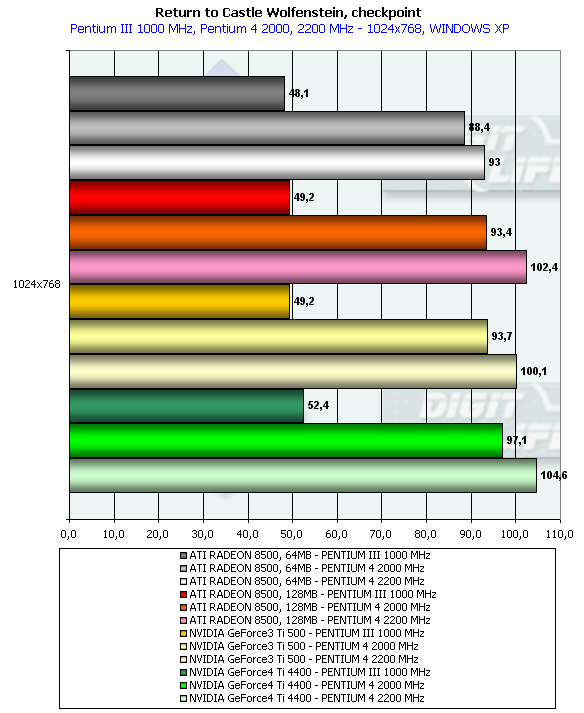
All accelerators go on a par because they are limited by the CPU's frequency
(and by the platform in case of the i815).
1280x1024
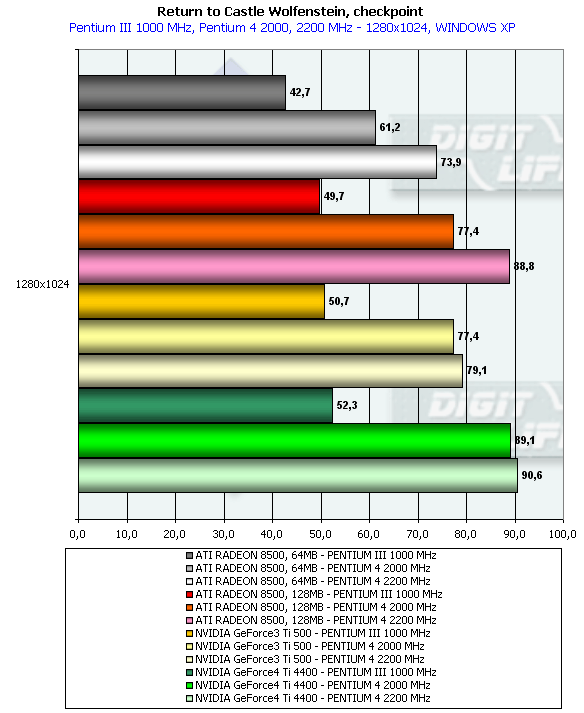
On the i815 platform the situation is still painful (except the fact that
the 128 MBytes R8500 beats its 64 MBytes brother), on the more powerful platforms
the R8500 128 MBytes has caught up with the Ti 4400 card.
1600x1200
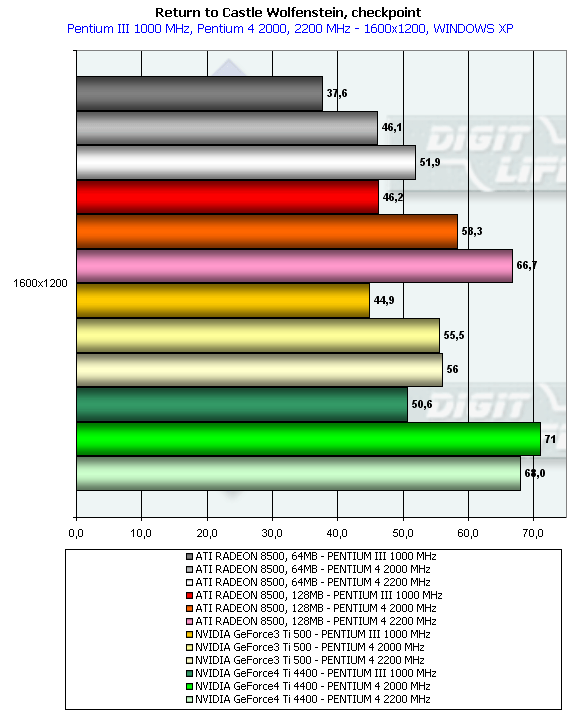
Here the situation is different; and although the Ti 4400 is leading, the
RADEON 8500 128 MBytes card is very close.
Summary
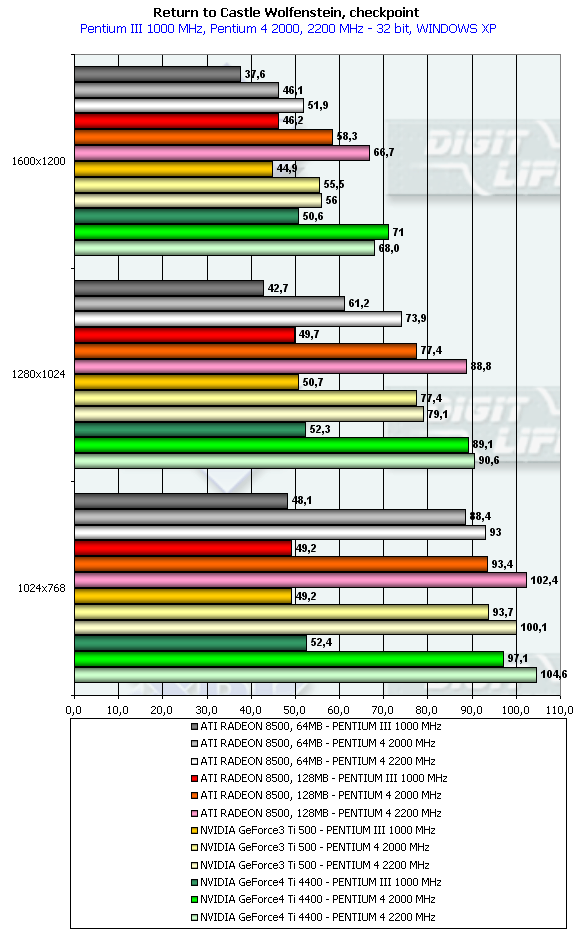
On the whole, modern games become strongly dependent on a CPU today: what
they need most of all is a super processor and a very powerful platform.
In our next reviews we will estimate how performance of video cards
depends on a CPU with some functions such as anisotropy and AA enabled.
GeForce4 MX 420 tests
Serious Sam: The Second Encounter
The tests were carried out in 32-bit color mode.
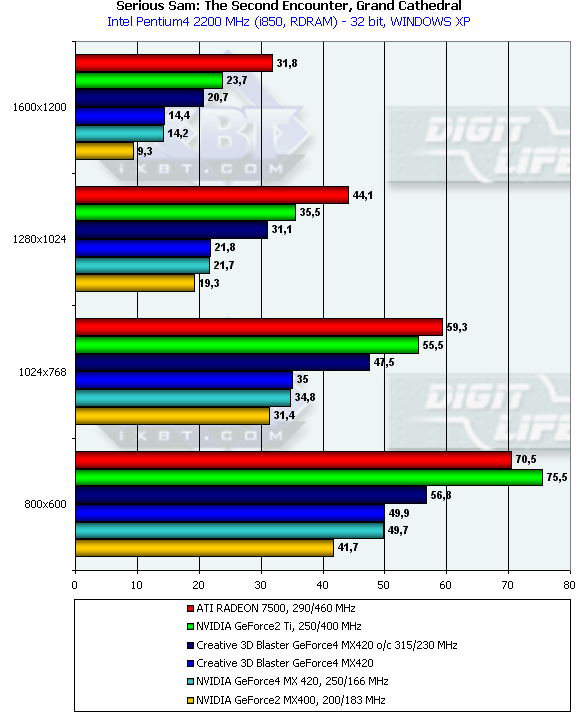
The tests of this budget card will define its place among modern cards
of the similar price level. This card is just a bit faster than the MX400
and loses to the rest. I don't understand what for I must pay $100 if the
more powerful GeForce2 Ti is cheaper.
Note that the RADEON 7500 wins from the GeForce2 Ti thanks to 6 texture
units in this game (in other tests only 4 are enabled). Note that these
tests are carried at 290 MHz, i.e. directly from ATI Technologies. And
now this card costs more than the GeForce2 Ti.
Return to Castle Wolfenstein
The tests were carried out in 32-bit color mode.
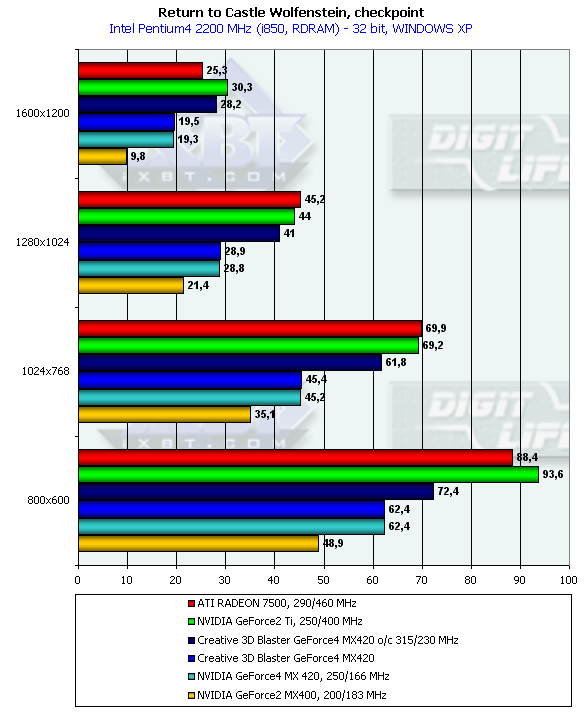
The gap between the MX400 and MX 420 is larger, but it is still a long
way towards the GeForce2 Ti and RADEON 7500 cards.
I wonder why such a budget card costs a fortune? The much faster GeForce4
MX 440 is sometimes cheaper than the MX 420 model. Do the sellers want
to deceive users with the "GeForce4" label?
In closing, I'd like to recommend you to read our 3Digest
where you can find detailed information on performance of these
cards on different platforms.
Conclusion
We have examined two cards of the same company and the same family but
of different price and functional categories. The Creative 3D Blaster 4
Titanium 4400 is almost the most powerful accelerator based on the reference
design; the Creative 3D Blaster 4 MX 420 is a budget card which has characteristics
corresponding to the improved GeForce2 MX400, however its price is too
high.
I just hope that in the near future the prices for the MX 420 will go
down to the rational level.
Both cards are of high quality, their speeds and functions do correspond
to the specified ones (except the lacking dual-head support of the MX 420,
but it seems that it was decided so. Today two monitors are supported only
by MX 460 cards, though when the MX line was announced this feature was
said to be included in all cards).
It's a pity that Creative Labs just resells stranger's cards. And if
you now ask me which card to buy - MSI GeForce4 or Creative GeForce4, I
will answer that you'd take what's cheaper.
Highs:
- High quality of the tested sample;
- Excellent performance in 3D of the Creative 3D Blaster 4 Titanium 4400;
- Higher speed of the Creative 3D Blaster 4 MX 420 than of the GeForce2 MX400;
- Full support of all DirectX 8.0 functions and a partial one of the DirectX
8.1 (it concerns the GeForce4 Ti 4400 card);
- TV-out realization is more effective among all latest NVIDIA based cards
(an image can be displayed on a TV screen and on a monitor simultaneously);
- Good Retail package.
Lows:
- Overpriced GeForce4 MX 420.
Write a comment below. No registration needed!
